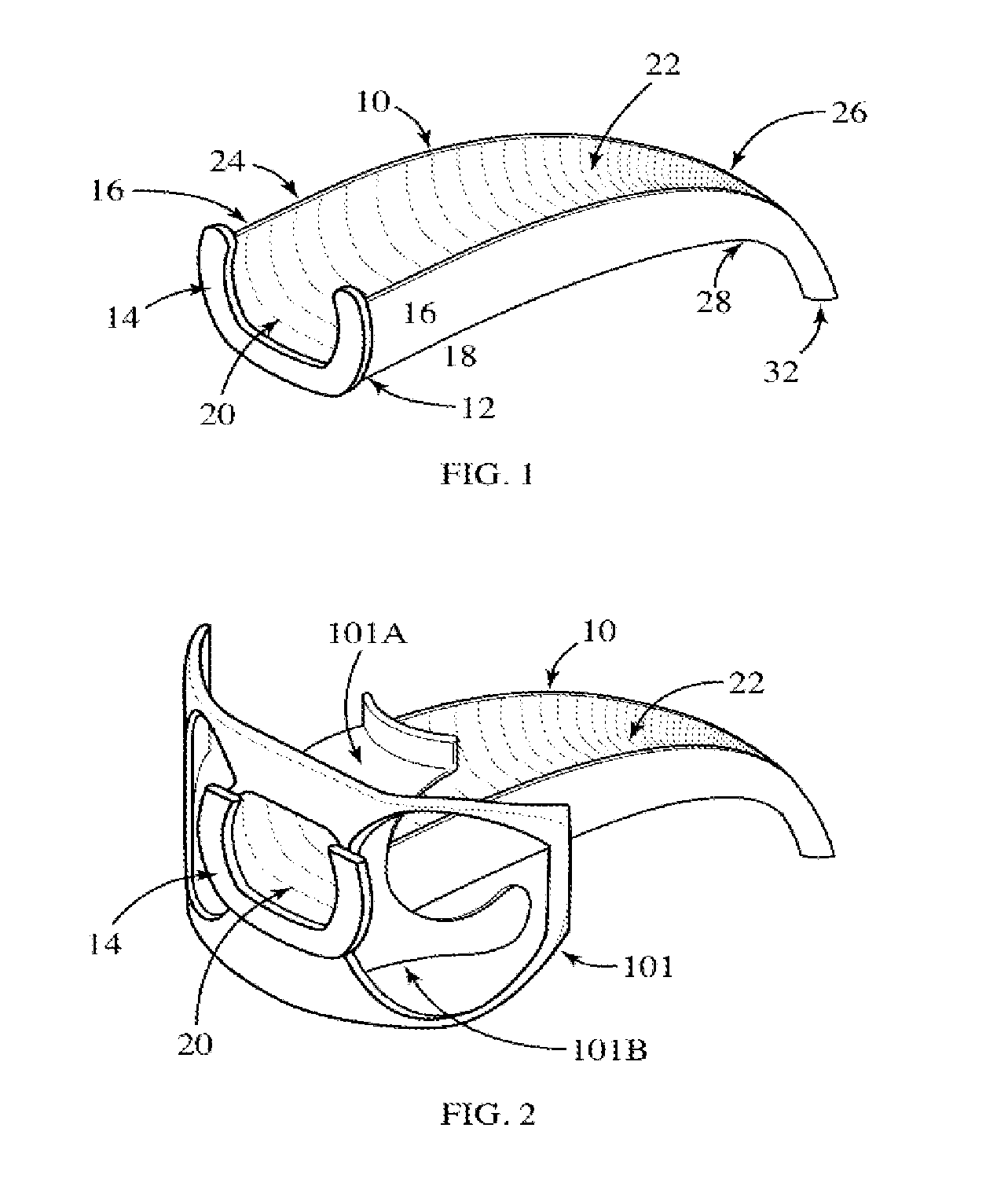Endoscopic and Transesophageal Oropharyngeal Airway
- Summary
- Abstract
- Description
- Claims
- Application Information
AI Technical Summary
Benefits of technology
Problems solved by technology
Method used
Image
Examples
Embodiment Construction
[0030]It is understood that this description and the accompanying drawings illustrate aspects and embodiments of the present invention and are not limiting. Nor is the present invention limited to the use in the context suggested by the background section.
[0031]Further, the terminology in this description is not intended to limit the invention. As used herein, the term “minimally invasive surgery” includes esophagogastroduodenoscopy, transesophageal echocardiography, bronchoscopy, or any other diagnostic or surgical procedure in which a surgical instrument is disposed in the oral cavity. Also as used herein, the term “surgical instrument” includes any one or more of flexible optical scopes, fiberoptic scopes, videoscopes, ultrasound probes, or other types of devices or combinations thereof, that are capable of performing functions ascribed to or associated with the surgical instrument.
[0032]Referring now to the drawings in detail and particularly to FIGS. 1 and 3, there is shown one...
PUM
 Login to View More
Login to View More Abstract
Description
Claims
Application Information
 Login to View More
Login to View More - R&D
- Intellectual Property
- Life Sciences
- Materials
- Tech Scout
- Unparalleled Data Quality
- Higher Quality Content
- 60% Fewer Hallucinations
Browse by: Latest US Patents, China's latest patents, Technical Efficacy Thesaurus, Application Domain, Technology Topic, Popular Technical Reports.
© 2025 PatSnap. All rights reserved.Legal|Privacy policy|Modern Slavery Act Transparency Statement|Sitemap|About US| Contact US: help@patsnap.com



